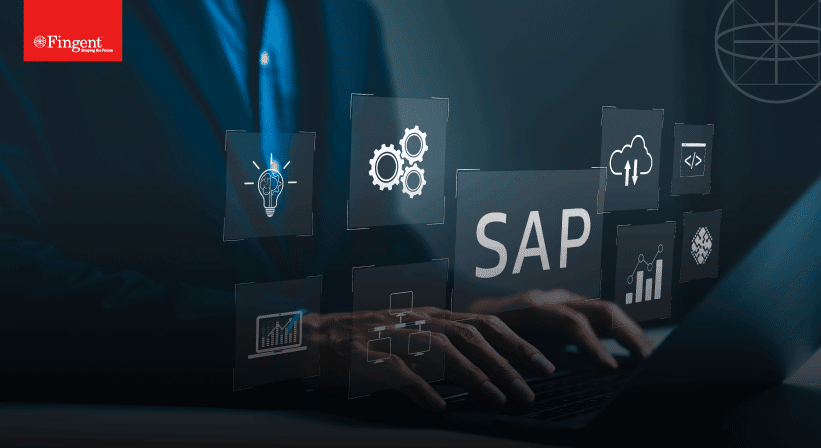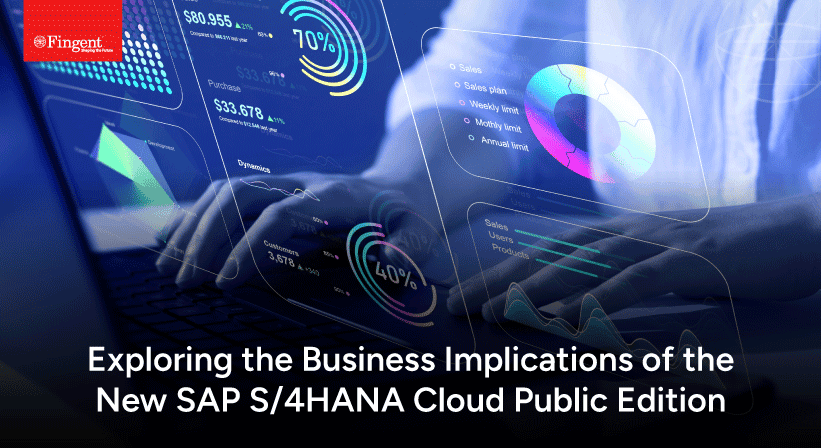SAP S/4HANA Greenfield vs Brownfield vs Bluefield – A Guide for Simplified Migration
One-size-fits-all? Not anymore, and definitely not when it comes to SAP S/4HANA! If you’ve made the choice to transition from your legacy systems to SAP S/4HANA, then you’re on the right track! It is surely the first step towards business transformation. However, the next step is crucial, i.e., finding the right path to SAP S/4HANA Migration. Many factors are unique to your business, including your current system layout, business needs, and long-term goals. Your migration path can be defined based on these factors to drive a successful transition journey. Explore the various paths to SAP S/4HANA migration in this blog, and identify what suits your business the best!
Ease Your SAP S/4HANA Migration Journey With Us
1. New Implementation (Greenfield Approach)
What Is the Greenfield Approach?
The Greenfield approach is essentially a completely fresh start with a new S/4HANA. This approach allows you to redesign and optimize your business procedures from scratch. It is also referred to as ‘a new implementation’.
The new implementation approach completely reengineers the system, which could simplify processes with a technological backbone. All systems are reinstalled and re-coded to fit business needs. The Greenfield approach is suitable for new and existing customers alike. It helps multifaceted and complex systems simplify their processes. Let’s explore some benefits and challenges of the Greenfield approach.
Benefits:
- Fresh start: During the Greenfield approach to transformation, existing in-house developments and third-party systems undergo a thorough examination. This helps business owners find the root cause of any shortcomings or mishaps. Re-starting with a clean slate can ensure that no incompetence is carried forward from legacy systems.
- Process Optimization: This approach and reinstalling systems also encourage business owners to redesign business processes from scratch. It eliminates the need to adjust old processes to conform to industry standards. It helps you focus on the current needs and standards and implement them. This way, you can fully leverage S/4HANA capabilities.
- Latest Features: Classical in-house developments in the core system are being replaced by new architectures. The Greenfield approach can achieve these architectures. The new architectures allow regular modernization through rapid updates. Instead of major upgrades, these architectures focus on subareas. They continuously update the system’s smaller, more integral aspects, and the entire system is completely renewed in a few years.
Considerations:
- Cost, time, and history: The biggest fear concerning the Greenfield approach is its cost. Starting from scratch may feel like a regression and require more effort and longer project timelines. Another note is that the new implementation may lead to losing historical context that is still relevant to your business.
- Change in Management: A clean slate entails a complete shift in management. This may affect employees and users as they must get accustomed to the new system.
2. System Conversion (Brownfield Approach)
What Is the Brownfield Approach?
Also known as System conversion, the Brownfield approach enhances your existing SAP ERP system. This approach lets you migrate to SAP S/4HANA without causing much disruption to your existing system. It upgrades only specific existing elements of the SAP landscape, such as interfaces to suppliers and partners. With the Brownfield approach, you can retain your systems’ customizations and historical data. The system conversion approach allows you to re-examine your existing processes and improve the lagging ones.
Benefits:
- Reduced Disruption: Whereas it might feel like your system is shaken to its core with the Greenfield approach, the Brownfield approach is gentler. There is minimal disruption to the users. The loss of previous customizations is also prevented.
- Cost-effective: This approach does not require a complete reboot, so the cost of implementation is low. It is also not time-consuming and is best suited for companies already associated with SAP ERP.
- Data Continuity: This approach only upgrades systems, leaving all historical data untouched. It also removes the need to migrate customizations.
Considerations:
- Technical Complexity: It is sometimes viewed as a stifling innovation. This is because all the previous data from your SAP ERP is being ported over without any modifications. This process requires thorough preparation and testing.
- Customization Clean-up: This approach requires users to manually clean up incompetent customizations and useless data to leverage S/4HANA fully.
Read more: Navigating SAP S/4HANA Migration Risks For Transformation
3. Selective Data Transition or Bluefield Approach
What Is the Bluefield Approach?
Greenfield and Brownfield, together, give birth to the Bluefield Approach. This approach, also known as the selective data transition, involves transitioning only selected data and processes to the S/4HANA system. It allows you to enhance certain areas while seamlessly retaining others. This hybrid approach takes on the best of both the parent “fields” and is becoming the most preferred approach.
The Bluefield approach best suits large-scale enterprises with extensive data and complex systems. With this approach, you can eradicate any problems you may otherwise face with the Greenfield and Brownfield approaches. You can handpick aspects of your system that you want modified. These can be enhanced while your current system remains unbothered by data cleaning and migration into the new system.
Benefits:
- Flexibility: Since you can select which aspects of the system you want updated, this approach is highly flexible and can be adjusted to meet your unique business needs.
- Process Improvement: You can enhance only the key processes that require optimization without re-starting from scratch.
- Data Control: Another key advantage is that you can pick what customizations to retain and which historical data to migrate. All the data tabs are under your supervision and control. This also benefits users, as they do not have a complete perceptual shift.
Considerations:
- Complex Planning: All the aforementioned benefits can be reaped only with thorough planning. Since you have to select parts of the system to upgrade, there is a lot of effort spent on preparation. The new system needs to be tested and validated. Data needs to be mapped accurately. Customizations have to be replicated. All this needs to be done before migration and usually calls for a team of experts or a third-party tool
- Balanced Approach: Balancing the old and new system elements without losing track of them is the challenge. Handling the aftermath of the implementation is where the real work begins. This includes expert Change Management to ensure smooth transitioning. Employees must be trained to handle this hybrid system as well.
4. Central Finance
What Is the Central Finance Approach?
Central Finance is a novel approach. It involves implementing S/4HANA Finance as a central system simultaneously with your existing ERP system. SAP Central Finance is a system that is used to receive data pivotally from multiple source systems. It then transforms and processes financial data at your pace, with your ERP in the background.
Benefits:
- Gradual Transition: Because it works with the backdrop of your existing ERP, it follows a phased approach. This allows users to move at their own pace, and migration happens according to the user’s wishes.
- Financial Insights: It establishes a streamlined source for consistent reporting and analysis. With real-time replication of financial data, it provides information for intelligent decision-making on the go and instant advice to enhance financial processes.
- Consolidation: All the financial data that flows into the system is consolidated into a unified view. This gives users centralized access to all relevant information. Users can thus analyze their transactional processes without any hassle.
Considerations:
- Integration Effort: Since data is received from multiple sources, communication must be robust between these sources and the central S/4HANA system. Maintaining seamless integration among these two can be time-consuming and require expert manpower.
- Limited Scope: As the name suggests, this system is bound to focus on the financial aspects of the business. This may not always be helpful and can lead to stunted migration later.
SAP ECC to SAP S/4HANA Migration: Why Act Now?
How to Choose the Right Path?
Every business has a perfect integration path fit. As you have seen, there are multiple approaches you can choose from. Whatever path you decide to take will depend on several other factors. Factors such as your current system landscape, business goals, project timeline, and company budget. Below are a few things you should consider before deciding which integration path to take.
- Assess Current System: Assess your current state – your ERP system, customizations, data quantity, and quality. Examine how each path will impact your company’s efficiency and try to predict what your business will look like after implementation. Assessing your budgets, project timelines, and current system landscape is essential.
- Define Objectives: Take a step back and reevaluate your business objectives and goals. Draw a strong link between your business goal and S/4HANA. This will help you clarify your priorities before you move forward.
- Consult Stakeholders: Ask for advice amongst your most trusted. Involve your key stakeholders from various departments in your business. Consider their opinions and ensure that they are on board with the implementation plan. They will need to put effort into gathering input and preparing for the migration.
- Plan Thoroughly: A well-thought-out plan is least likely to fail. Don’t spare any effort in developing detailed, foolproof migration plans. They should include timelines, resource allocations, and risk mitigation strategies. Always be prepared with a post-implementation plan as well.
- Engage Experts: Consider involving SAP consultants or partners. Their expertise in S/4HANA migrations will certainly guide you through the process.
Transforming Your Business with Fingent
Statistics show that, in 2024, over 20807 companies worldwide will have started using SAP S/4HANA as an Enterprise Resource Planning (ERP) tool. The question then is not if but when you will migrate.
Granted, the process of migration is never an easy one. Nonetheless, transitioning to SAP S/4HANA is a journey worth taking. It can make a monumental difference in your business capabilities. By considering and learning about the different integration paths, you can become more prepared for this change. By carefully planning your approach, you can ensure a seamless transition that meets your unique needs. Regardless of your method, moving to S/4HANA will boost your organization for future growth and progress. Begin your transition process today and enjoy the benefits of S/4HANA to the fullest. With decades of experience in helping clients with SAP products, our team at Fingent can help you find and journey through the best migration path for your business. Let’s talk.
Stay up to date on what's new

Recommended Posts

09 Aug 2024 B2B
Navigating SAP S/4HANA Migration Risks For Seamless Transformation
SAP ECC is ending support in 2027, leaving leaders with one choice: migration to SAP S/4HANA. This strategic move promises business benefits like improved operational efficiency and advanced analytics. Although,……

24 Jul 2024 B2B
A Comprehensive Guide on Mastering SAP S/4HANA Transformation
SAP S/4HANA Transformation is paving the way for businesses to lead stress-free and effective operations. Offering reliable and flexible solutions, SAP S/4HANA is helping companies tackle changing market dynamics, the……

24 May 2024 B2B
SAP ECC to SAP S/4HANA Migration: Why Act Now?
It's official! SAP will end ECC support in 2027. SAP ECC has been a cornerstone for many industries and has undoubtedly had a good run. But now it’s time to……

10 Apr 2024 B2B
Driving Business Efficiency With The New SAP S/4HANA Cloud Public Edition
Everyone is talking about the new SAP S4HANA Cloud Public Edition! Is it really that big a deal? The short answer is Yes! The detailed answer is in this blog.……
Featured Blogs
Stay up to date on
what's new




















































